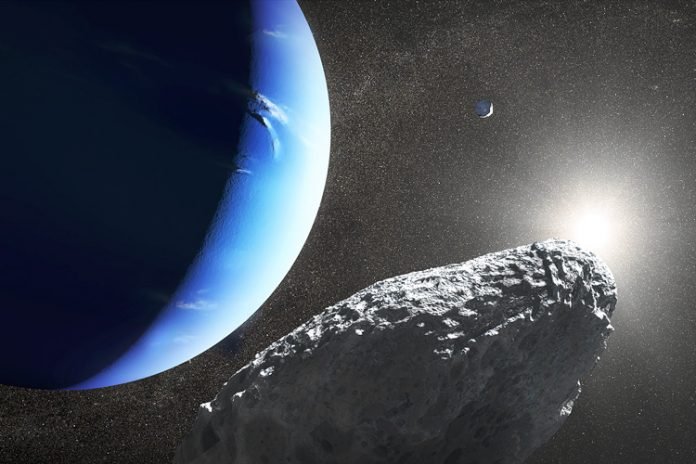
In a new study, scientists found that the Neptune’s newest moon Hippocamp could be a part of a larger moon.
The Neptune’s tiniest moon was chipped off by a cosmic collision billion of years ago.
The study was done by researchers from UC Berkeley.
Hippocamp was uncovered in Hubble Space Telescope photographs in 2013.
The researchers did not expect to find such a tiny moon right next to Neptune’s biggest inner moon.
They suggest that the larger moon, Proteus was once where Hippocamp is now.
The team thought that over time, Proteus should have gravitationally swept aside or swallowed the smaller moon while clearing out its orbital path.
But now the orbits of the two moons are only 7,500 miles apart.
The researchers then found the key to the puzzle in pictures of Proteus taken in 1989 by Voyager 2.
The pictures showed an impact crater almost large enough to have shattered the moon.
The team believed that the impact kicked out a little piece of Proteus that has slowly migrated away from the parent body.
The new finding is the first evidence that a moon in the solar system is a castoff from a comet collision.
Many billions of years ago, Neptune captured the large moon Triton from the Kuiper Belt. Triton was Neptune’s first generation of the satellite system.
Triton settled into a circular orbit and Neptunian moons were re-coalesced into the second generation of natural satellites.
The birth of Hippocamp may be considered a third-generation satellite.
The team suggests that this discovery is one example of the violent collisional history and continuous evolution of the solar system.
One study author is Mark Showalter of the SETI Institute in Mountain View, California.
The study is published in the science journal Nature.
Copyright © 2019 Knowridge Science Report. All rights reserved.



